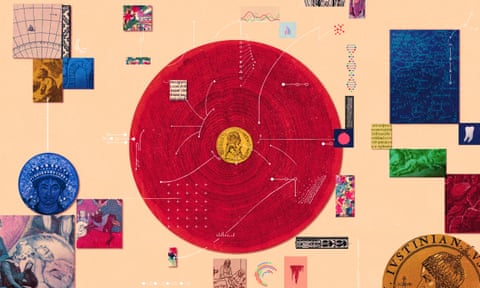Scythians did terrible things. Two-thousand five-hundred years ago, these warrior nomads, who lived in the grasslands of what is now southern Ukraine, enjoyed a truly ferocious reputation. According to the Greek historian Herodotus, the Scythians drank the blood of their fallen enemies, took their heads back to their king and made trinkets out of their scalps. Sometimes, they draped whole human skins over their horses and used smaller pieces of human leather to make the quivers that held the deadly arrows for which they were famous.
Readers have long doubted the truth of this story, as they did many of Herodotus’s more outlandish tales, gathered from all corners of the ancient world. (Not for nothing was the “father of history” also known as the “father of lies” in antiquity.) Recently, though, evidence has come to light that vindicates his account. In 2023, a team of scientists at the University of Copenhagen, led by Luise Ørsted Brandt, tested the composition of leather goods, including several quivers, recovered from Scythian tombs in Ukraine. By using a form of mass spectrometry, which let them read the “molecular barcode” of biological samples, the team found that while most of the Scythian leather came from sheep, goats, cows and horses, two of the quivers contained pieces of human skin. “Herodotus’s texts are sometimes questioned for their historical content, and some of the things he writes seem to be a little mythological, but in this case we could prove that he was right,” Brandt told me recently.
So, score one for Herodotus. But the hi-tech detective work by the Copenhagen researchers also points to something else about the future of history as a discipline. In its core techniques, history writing hasn’t changed that much since classical times. As a historian, you can do what Herodotus did – travel around talking to interesting people and gathering their recollections of events (though we now sometimes call this journalism). Or you can do what most of the historians that followed him did, which is to compile documents written in the past and about the past, and then try to make their different accounts and interpretations square up. That’s certainly the way I was trained in graduate school in the 2000s. We read primary texts written in the periods we studied, and works by later historians, and then tried to fit an argument based on those documents into a conversation conducted by those historians.
But what if there was another way? What if instead of digging in the archives and criticising arguments, you could write history directly from the physical remains of the past, reconstructing events with the forensic detail of a crime scene investigator? This would be a history written not from words, but from things. Archaeology, art history and other disciplines rooted in the close study of material culture have long held out this promise. But traditionally there has been a dividing line between what they could offer and what was seen by many historians as their true task. These fields tended to move on different scales, and paid attention to different subjects. Historians, examining archival documents, written annals and inscriptions, focused more on named individuals in specific moments. Archaeologists and their brethren, examining changing styles of architecture, burials, fragments of ceramics and so on, gathered plenty of information, but on a broader scale. In a few places, such as the study of coins and seals, the two methods overlap. But generally speaking, these two approaches to the past – text-based and thing-based – have been assigned in different domains. Recently though, this division has become blurrier.
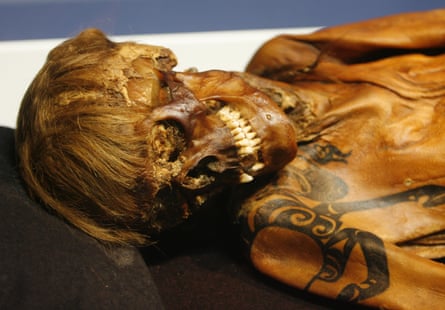
In the past decade or so, scientists’ ability to extract information from material remains has grown exponentially. In some cases, such as the study of ancient climates, old techniques have been employed with new scope and precision. In others, procedures such as whole-genome DNA sequencing – once expensive and error-prone when applied to ancient samples – have become reliable and ubiquitous. We also have brand new methods of dating, imaging and chemical analysis, which have allowed the detritus of antiquity – everything from teeth to shoes to ancient rubbish itself – to speak about the past as eloquently as any archive.
Today, historians are not only reading manuscripts; they are testing the pages themselves to track the genes of the flocks of cows and sheep whose skins were used to make the parchment. Minute traces of protein found in archaeological digs can now be used to precisely identify scraps of decayed organic matter – beaver pelts in a Viking grave, to take one example – and source them back to their point of origin. The study of ancient proteins is now its own field, called paleoproteomics. Other forensic techniques have opened up other lost pages of the past. Analysis of stable isotopes preserved in human bones and animal teeth has allowed scientists to track the movement of a single girl from Germany to Denmark in the bronze age, trace the importation of baboons into ancient Egypt from the horn of Africa and follow a woolly mammoth from Indiana on its annual migrations across the midwest 13,000 years ago. Sequencing of ancient DNA taken from medieval ivory chess pieces traced their origins back to the African savannahs. Ancient chicken bones have been used to chart the spread of Polynesian peoples across the Pacific.
These developments have not been universally celebrated. Humanist scholars tend to see past events in human terms, with the great drivers of history coming from changes in culture and society. Natural scientists tend to focus on fluctuations in the natural world, often ascribing the fall of empires and kingdoms to factors such as prolonged droughts and outbreaks of plague. Some historians, like the Byzantinists Merle Eisenberg and John Haldon, caution against “overhasty assumptions” concerning the relationship of society and environment, and warn of “exaggerated claims” about the impact of climate and disease on civilisation.
Other historians are thrilled by the possibilities the new science offers. For Michael McCormick, a medievalist at Harvard and the holder of the University’s chair in the Science of the Human Past, the cumulative effect of these various innovations has been a “scientific revolution”, which is still in its infancy. Speaking with audible excitement from his home in Cambridge, Massachusetts, McCormick told me that history today is roughly in the same place astronomy was “when Galileo first looked up with his telescope”.
In the 1970s, as a graduate student at the Catholic University of Louvain in Belgium, McCormick learned all the skills then required of a medieval historian: “Greek and Latin philology, linguistic history, vulgar Latin, late Greek, classical Greek and palaeography.” These days, he thinks, this sort of training needs to be supplemented with comparable attention to material evidence. “Once you have physical pieces of the past in your hands, then the entire toolkit of the scientific revolution can be applied to it,” he said. “If you have leather, you can look at what the cow drank. If you have lumber, you can see what forest it grew in. With molecular data, you’re opening out this giant treasure house of human history, going back to our migration from Africa.”
Many share McCormick’s enthusiasm. A wave of money and grants has flowed towards efforts to apply laboratory methods to the study of the past. Institutes, initiatives and centres for excellence devoted to the subject have sprung up everywhere from Oslo to Beijing – and with them solutions to questions historians never even knew to ask, let alone answer.
The new science of history is particularly illuminating when applied to eras for which written documentation is scarce. Much of what we know about life in what scholars call the early medieval period, for example – the period once widely known as the dark ages – comes from monastic chronicles and saints’ lives. These sources supply plenty of information about religious observance, but have much less to say about the origin of kingdoms, say, or the growth of trade.
In the past decade, science has been able to fill in some of the blanks. After the fall of the western Roman empire, the European economy went into a tailspin. There was no stock ticker or economic index to track the scope or timing of the crash, but historians have been able to recover a bird’s eye view of what was happening by looking at evidence preserved in ice. Ice cores taken from Swiss and Greenlandic glaciers preserve a chronological record of the composition of the atmosphere, stacked year over year. Levels of lead in these cores correlate to the amount of silver that was being mined at any given moment. When atmospheric scientists measured the quantity of this ancient lead pollution in sections of the ice core dating to the first millennium AD, they found that silver production crashed in the third century – earlier than expected and well before the end of Roman power – and didn’t pick up for 400 years, when the Merovingians re-opened major silver mines in France.
On the micro-economic level, archaeological evidence, analysed in new ways, shows how trade networks began to re-emerge across the continent after its nadir in the sixth and seventh centuries. Using DNA, one lab determined that animal skulls unearthed in a medieval settlement beneath modern-day Kyiv belonged to walruses killed in the waters between Canada and Greenland, from where they were shipped 2,500 miles to be used for making jewellery and chess pieces. Chemical analysis of beads found in Viking emporiums showed that the glass in them had been scraped from Roman mosaics, hundreds of miles from their ultimate resting place in Scandinavia.
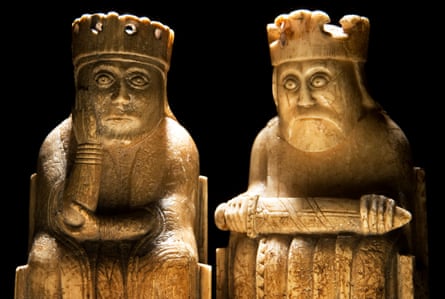
Bead by bead, tooth by tooth, this research reveals a picture of the links joining north and south, east and west. But is this really something new? Archaeologists have had centuries of practice fitting physical evidence to historical narratives. There has, however, always been a disconnect between the two sources of information. The materials unearthed by excavators provide copious data on the lives of ordinary people, but don’t offer an exact chronology. By contrast, the textual sources used by historians tend to be firm on dates, but vague on the specifics of everyday life.
A new method for studying ancient climates is allowing scientists to close this gap. Today, palaeoclimatologists can draw on data culled from thousands of ancient trees and glacial samples to ascertain the conditions in a given spot on the globe in any given year. It is now possible to ask very specific questions about the climate changes lurking behind major historical events. For instance, what was the weather like when the Huns marched on the Roman empire? (Extraordinarily dry, especially in summer – just the thing to get pastoralists to look for greener pastures.) Or what was the weather like in Mongolia when Genghis Khan was gathering his forces? (Warm and wet, perfect for feeding an army and its tens of thousands of horses.)
Along with climate, pandemics form another of the great forcing agents of history. Enormous progress has been made in recent years in identifying the sources and transmission routes of ancient plagues. Credit goes largely to the study of ancient microbial and viral genes, which allows scientists to precisely identify ancient contagions. Genome sequencing has become faster and cheaper. At the same time, scientists have become better at finding DNA in skeletal remains, for instance, by targeting the bones of the inner ear, which contain an unexpected bonanza of ancient genes. Today, more than 10,000 ancient genomes have been sequenced and thousands more are on the way. This torrent of fresh data has made it possible to track migration across the millennia. Anthropologists can now chart the diffusion of early humans from Africa, and prehistorians can observe the rise of horse-based nomads in the late stone and early bronze ages.
Diseases moved in tandem with people, but the exact routes by which they spread between continents have long been unclear. Now, though, along with human genes, paleogenticists have been able to sequence the genetic code of diseases that afflicted people at the time of their deaths. This means that they not only diagnose ancient maladies, but observe the way they spread and mutate over time.
In doing so, palaeogenetics have helped to unravel one of the great catastrophes – and mysteries – in all of history.
In the year 536, the world started going awry. First, the sun went dim in the sky. Even at noon in midsummer, it stayed pale and cool, looking more like the moon. Wheat rotted in the fields and grapes spoiled on the vine. Winter that year was dreadfully cold, as were those that followed. Five years later, an even worse calamity struck. In 541, reports of a terrible disease started arriving on the shores of the Mediterranean. It was said to have arrived in Egypt from some distant place, perhaps Ethiopia or India. Travellers in Palestine reported passing through abandoned villages in which the illness had killed everyone who had not fled.
By 542, the contagion was in Constantinople, the capital of the eastern Roman empire (AKA the Byzantine empire) and one of the most populous cities in the world. At its height, contemporaries estimated that the plague was killing 10,000 people a day. Work of all kinds ceased. Starvation ran riot. Even the emperor, the great Justinian, who had codified the laws and built the great church of Hagia Sophia, fell ill.
Historians have had trouble sorting out exactly what happened and why. The few chronicles we have from the time of the plague – known as the Justinianic plague, after the emperor – provide only a pinhole view of events: a view from the capital, a traveller’s report from Palestine, and little else besides. Having no concept of bacteria or viruses, those who experienced the plague could not determine its biological cause. The strange cold spell that preceded the plague was equally mysterious. Was the cooling something local, or was it a global event? And what could cause the sun to dim in such a way in the first place?
The effects of this strange double disaster are disputed as well. Not long ago, to many experts, they did not seem pivotal. Today, historians sometimes describe 536 as the “worst year in human history”, and the decade of suffering that followed as one of the major turning points in world history. For Mischa Meier, a professor of history at Tübingen University in Germany and a specialist in the history of Byzantium, it marked a major “caesura between epochs”, which “played a fundamental role in the transition from late antiquity to early middle ages”.
The Byzantine empire did not fall as a result of the plague, but it did change. It became a more fearful place and more inclined to put its trust in religion than in the wisdom of the ancients. Instead of Aphrodite and Cicero, its people began to idolise the Virgin Mary. Religious processions took the place of chariot races. Emperors ruled less as Caesars than as fire-and-brimstone preachers, promising their subjects salvation in the face of a threatening apocalypse. In a sense, then, the ancient world ended here, not with a siege, but with a sneeze.
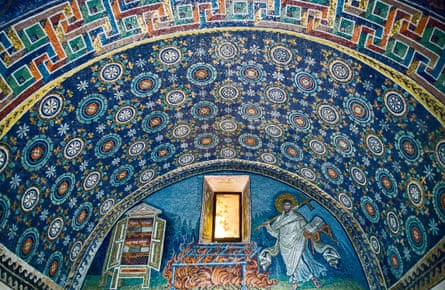
This thesis about the transformative nature of the plague and its attendant disaster is rather new, and it remains controversial. The story of how the disasters of the 540s went from a historiographical hiccup to one of the great inflection points in history involves a generation of multidisciplinary scientific detective work, and demonstrates the power of the new tools at our disposal to unlock the past.
Historians had long suspected that the Justinian plague was caused by Yersinia pestis, or the bacterium responsible for the bubonic plague. But without genetic evidence, there was no way to know for sure. Then, in 2014, palaeogeneticists finally identified the first clear signature of the bubonic plague dating to the sixth century. It came from an unexpected source – southern Germany, far from the bustling cities of the Mediterranean, which had been assumed to be the plague’s natural home. Since then, it has been identified in sixth-century remains in France, Spain and the UK. Analysis of bodies buried in a medieval cemetery in rural Cambridgeshire revealed that 40% of the people interred there had died suffering from the bubonic plague. Cumulatively, these discoveries suggest that the Justinianic plague was far more widespread than written sources had indicated, reaching beyond the remaining borders of the Roman empire to afflict such barbarian backwaters as Bavaria and Cambridge. The low amount of variation among the sixth-century samples indicates that it must have spread across the whole of Europe at lightning speed.
Identifying the culprit behind the other half of the 536 disaster – the strange weather that began that year – required a different set of scientific tools. Tree rings supplied the first piece of the puzzle. Using information obtained from trees in the Austrian Alps and the Altai mountains, Ulf Büntgen, a professor of environmental systems analysis at Cambridge, and his co-authors were able to show that 536 really was an exceptional year, “the coldest summer in the northern hemisphere in the past 2,000 years”. The decade that followed 536 was likewise the single coldest decade of the past 2,000 years.
But what caused this sudden, shocking cold snap? To find out, scientists had to peer inside Arctic glaciers. When palaeoclimatologists examined ice cores dating to the sixth century, they noticed an unusually high concentration of sulphates in the years after the start of the late antique little ice age. In the pre-industrial past, sulphur in the atmosphere had one main source: volcanoes. Gigantic volcanic eruptions pump huge quantities of gas into the upper atmosphere, where they can trigger episodes of global cooling by bouncing solar energy back into space. The ice core data suggested to climate scientists that a series of huge volcanic eruptions must have depressed global temperatures sometime in the mid-sixth century. But there was a problem: the dates didn’t line up. The ice cores indicated that the first eruption occurred in 529. Why would global cooling only begin seven years after the eruption that caused it? The solution to this riddle came from an unlikely source.
In 2012, a Japanese astrophysicist named Fusa Miyake was studying how the sun’s behaviour has changed over time. To do this, she measured the concentrations of carbon-14 – also known as radiocarbon – found in individual rings of ancient cedars from the lush, moss-strewn forests of Yakushima Island. Miyake found that the amount of radiocarbon spiked in certain years, probably as the result of the massive solar storms that struck the Earth in those years. Any organic material alive at the time of one of these storms carries a telltale chemical signature. These carbon-14 spikes – now known as Miyake events – provide a way of tying objects from archaeological sites to individual years. Among other things, Miayke events have been used to establish that the Vikings arrived in Newfoundland in 1021, two decades later than historians had previously thought.
By looking at the chemical signatures of Miyake events in ice cores pulled up from the depths of glaciers in Greenland and Antarctica, scientists were able to solve the mystery of the seven-year gap. It became clear that there had been miscalculations in the previous ice-core data, throwing out the chronology. The new Miyake data corrected this, and the seven-year gap now vanished: there really had been an eruption in 536, which caused the strange, sun-blotting cloud of that year. And two subsequent eruptions, in 540, and 547, contributed further to the extreme cooling that characterised the entire decade.

With these new dates, researchers could assemble the data from genes, tree rings and ice cores into a single coherent narrative about what happened post-536. It was a nightmarish picture: years of sunless summers and freezing winters, capped by an outbreak of perhaps the deadliest disease in human history. There is archaeological data to support this image of a world caught in mid-collapse. Excavations across Scandinavia have shown that the mid-sixth century was a period of extreme poverty and violence. It was a moment, in the words of the Danish archaeologist Frands Herschend, when the whole region “went down to hell”. No wonder the Byzantines thought the world was about to end.
But then again, it didn’t. The Byzantine empire didn’t fall in 541. It weathered the shocks of an unprecedented, deadly epidemic and simultaneous extreme volcanic weather event without collapsing. This had led some historians to doubt that the event marked anything like the “end of the ancient world”. To Lee Mordechai and Merle Eisenberg, historians at Hebrew University and Oklahoma State University, respectively, the Justinianic plague was no more than an “inconsequential pandemic”. They argue that there is little evidence that the plague led to the fall of empires or the collapse of states.
Speaking to me over the phone from Oklahoma, Eisenberg compared the story of the sixth-century crisis to a “murder mystery with no body”. There is a killer, there is a modus operandi, but the victim doesn’t die. Indeed, as Eisenberg pointed out, after the plague, Byzantium was largely “fine” for another “80 years”, until the Arab conquests devastated the empire and deprived it of much of its territory three generations later. “How can you plausibly connect something that happens in the 540s with the 630s?” Eisenberg asks. “That’s like saying the 2008 recession was caused by the 1918 flu.”
This tension, between scientific discoveries on one hand and historical narratives on the other, is a recurring feature of the new age of interdisciplinary, lab-powered history. In history, causation is rarely as simple as a lab result. Events happen inside a web of human institutions and ideas. They gain meaning only insofar as people ascribe meaning to them. For generations of historians, myself included, this means that any attempt at understanding a change in the past requires delving into the details of culture, religion, economics and political organization.
But when scientists interpret events, they tend to stress climate over culture, and pandemics over politics. Drought alone has been blamed for the collapse of the classical Maya, the Hittites and Akkadians, Angkor in Cambodia, Tiwanaku in Peru and the ancestral Puebloans of the American south-east. Meanwhile, volcanic eruptions have been held responsible for the downfall of several other civilisations, in addition to the collapse of the Byzantine empire.
Critics point out that in those periods of history for which we have more detailed documentation, sudden collapse in response to ecological stress is rather rare. Nicola Di Cosmo, an expert on China and central Asia at the Institute for Advanced Study in Princeton, observes that there is “no single model or paradigm” for how societies respond to climate catastrophes. The nomadic empires he studies were particularly vulnerable to changes in seasonal weather, as they depended on animal herds that could be easily wiped out by “protracted droughts and winter disasters”.
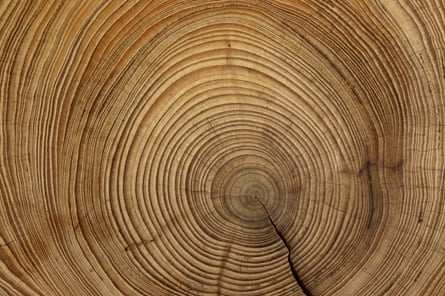
But even living this close to the environmental edge, states could prove to be resilient in the face of calamity. Soon after the Eastern Turkic empire was hit by a string of extremely cold winters in the late 620s, it suffered a series of military defeats and was ultimately dismantled by Tang China, its neighbour to the south. A century and a half later, the Uyghur empire, which occupied roughly the same area as the Eastern Turks, confronted what should have been a crippling, multi-decade drought. But instead of imploding, it thrived, in large part by establishing a military alliance and maintaining valuable trade links with the same Tang dynasty.
In each of these cases, the conditions for survival or collapse were shaped by political and economic decisions, rather than by the raw facts of climate. But changes in foreign policy and the direction of international commerce don’t show up in tree rings. Historical work rooted in ancient genes faces a parallel problem. It generates tremendous amounts of information, but this comes shorn of the kind of rich context that only more traditional humanistic methods can supply.
Not all the recent scientific inquiry into the past has focused on conquests and catastrophes. For Michael McCormick, the real impact of new “molecular history” is its ability to “open windows on lives of people without voices”. Women, disabled people and the enslaved are all present in written sources, but usually only in “tiny numbers”, and seen through another’s eyes. However, in cemeteries, all these people are present, and in great numbers.
In 2014, scientists examined the dental calculus – essentially, the ancient plaque – on the teeth of a deceased nun whose body had been excavated from a medieval cemetery in central Germany. The dental calculus revealed tiny flecks of lapis lazuli, which at this time was as costly as gold. Its main use was as a pigment: lapis lazuli was the crucial ingredient in ultramarine, the most vivid and beautiful blue available to anyone in the medieval world.
Why did this otherwise anonymous nun, who died around the year 1100, have pieces of this rare and precious substance in her teeth, of all places? Archaeologists’ best guess is that they got there as a result of her work painting illuminated manuscripts, either preparing the pigment or as a result of licking a paintbrush (perhaps to give it a finer point) while painting the manuscripts pages.
Little is known in detail about women’s role in creating illuminated manuscripts. Though these manuscripts rank among the middle ages’ greatest artistic masterpieces, few were ever signed. Of those from this period, only about 1% can be securely attributed to women. But as this nun’s teeth show, the silence of the written sources should not be taken for evidence of women’s absence.
We will most likely never know the name of this German nun. There are limits to what any artefact or bodily remain can tell us in the absence of written sources. However, those limits are being expanded all the time. New techniques of isotope analysis based on the close examination of the chemical elements inside human teeth and bone fragments are allowing scientists to track the movement of people not just across generations, but within single lifetimes. Combined with DNA analysis, this has produced a stream of intimate (if fragmentary) stories from the deep past: an African boy who grew up on the shores of the Red Sea and died young in Roman Serbia; a girl from the bronze age born in southern Germany and sent north (to marry? To die?) in Denmark; a young Sarmatian – one of the heirs to Herodotus’s Scythians – raised in the shadow of the Caucasus mountains, who went west in the time of the emperor Marcus Aurelius while still a child, and died in Britain, laid to rest in an unmarked grave in a ditch at the edge of a farm in what is now Cambridgeshire.
Did he come there as a soldier, or a slave? After 10 years or so in the empire, had he taken up Roman ways, or did he keep to the customs of his nomad ancestors? This is yet another thing we can only guess at. But the fact that we can even ask these questions highlights how profoundly the study of the past has changed in just a few years. History is now entering its pointillist phase, in which the big motions are caught in a thousand individual movements. With this individual, we see history played out on two scales. In the background, the stuff of big history – wars, trade routes and clashes spanning the better part of a continent. In the foreground, a young man, dead, far from home, whose life and fate we can only imagine.
This article was amended on 26 February 2024 because an earlier version referred to the study of ancient proteins as proteomics. That is the study of proteins in living organisms; it is paleoproteomics that is the study of ancient proteins. It was amended again on 4 March 2024 because an earlier version said ice cores indicated that an eruption occurred in 543, rather than in 529, and misidentified the isotopes used in certain types of ice core testing. These have been corrected.
